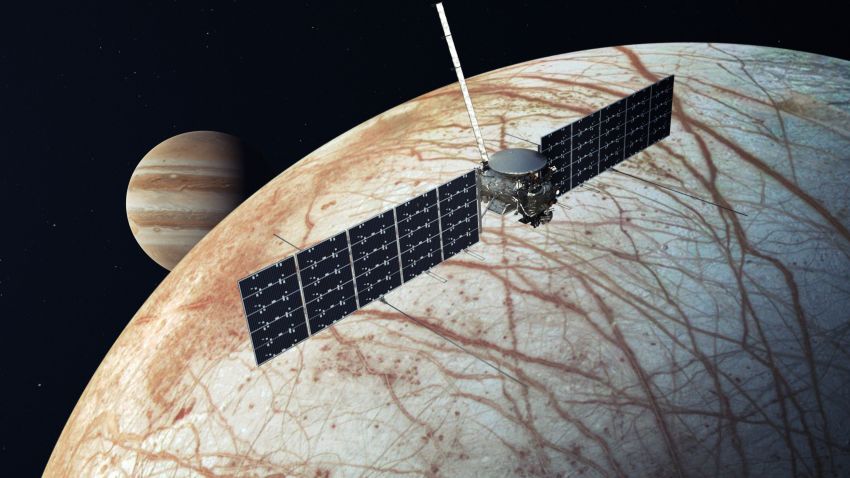Sign up for CNN’s Wonder Theory science newsletter. Explore the universe with news on fascinating discoveries, scientific advancements and more.
While it’s not yet possible for humans to venture to the intriguing ocean worlds in our solar system, NASA is sending a cosmic message in a bottle to Jupiter’s moon Europa that will carry more than 2 million names.
And your name can be one of them if you sign up before the year ends.
The launch of NASA’s Europa Clipper spacecraft is one of the most anticipated missions of 2024. The probe is expected to lift off from Kennedy Space Center in October and set off on a 1.8 billion-mile (2.9 billion-kilometer) journey to Jupiter’s moon Europa.
After arriving in orbit in 2030, Europa Clipper will spend the next few years flying by the ice-covered moon to see if the ocean beneath it could support life. Europa is among several ocean world moons considered to be one of the best places to search for life beyond Earth.
In addition to a suite of nine science instruments, Europa Clipper will carry a poem written by Ada Limón, the US poet laureate.
As part of her laureateship, Limón wrote “In Praise of Mystery: A Poem for Europa.” The original poem will be engraved in Limón’s handwriting on a tantalum metal plate sealing the spacecraft’s sensitive electronics inside a vault to protect them from Jupiter’s harsh radiation.
The poem will face the inside of the vault, along with microchips stenciled with the names of people who submit to NASA’s Message in a Bottle campaign.
Once all the names have been collected, they will be added to the spacecraft, which is being assembled at NASA’s Jet Propulsion Laboratory in Pasadena, California.
The space agency offers a continuous live view of Europa Clipper’s assembly on its website.
Technicians will use electron beams to stencil the names on the dime-size silicon chips at JPL’s Microdevices Laboratory. Each name will be smaller than 1/1000th the width of a human hair.
NASA has a long history of sending names to space aboard missions, including Artemis I, the Perseverance rover and Parker Solar Probe.
Europa Clipper is the largest spacecraft NASA has developed for a planetary mission. With its massive solar arrays deployed, Europa Clipper will be more than 100 feet (30.5 meters) across and stand 16 feet (about 5 meters) tall.
After arriving in orbit in April 2030, Europa Clipper is set to make nearly 50 flybys of Europa, eventually coming within 16 miles (25.7 kilometers) above its thick ice crust to survey almost the entirety of that moon.
The spacecraft will use cameras, spectrometers, ice-penetrating radar and a thermal instrument to understand how the moon formed and if it’s possible for life to exist on icy ocean worlds.







